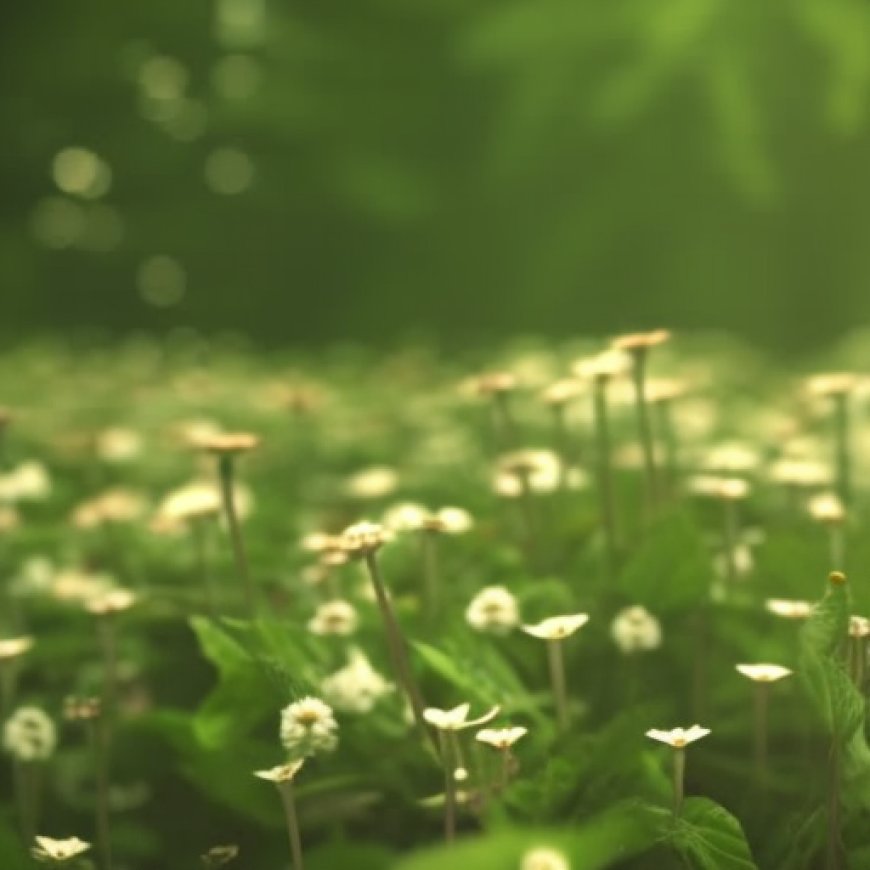Pressure on nature threatens many flowering plants with extinction
Pressure on nature threatens many flowering plants with extinction BBC.com


Forty-five per cent of the world’s known flowering plants could be threatened by extinction
Introduction
Scientists have warned that 45% of the world’s known flowering plants are at risk of extinction. This includes orchids, varieties of pineapple, and many important crop species.
Sustainable Development Goals (SDGs)
- Goal 15: Life on Land
- Goal 13: Climate Action
- Goal 2: Zero Hunger
- Goal 3: Good Health and Well-being
Study Details
The study was conducted by the Royal Botanic Gardens, Kew, and involved research by 200 scientists in 30 countries. It analyzed data from the World Checklist of Vascular Plants and the International Union for Conservation of Nature’s Red List of Threatened Species.
Importance of Plants
Plants are essential for various aspects of humanity. They provide medicines, contribute to biodiversity, and play a crucial role in combating climate change. Losing plant species could result in the loss of potential medicines and solutions to hunger.
Fungal Kingdom and Biodiversity
The report highlights the importance of the fungal kingdom in biodiversity science. Fungi have immense potential in various fields, including industry and drug discovery. However, less than 10% of fungi species have been named and studied.
Conclusion
The report emphasizes the need for conservation efforts to protect plant and fungal species. It also calls for further exploration and mapping of “darkspots” in countries rich in wildlife. Understanding and preserving biodiversity is crucial for achieving the Sustainable Development Goals.
Related Topics
SDGs, Targets, and Indicators
1. Which SDGs are addressed or connected to the issues highlighted in the article?
- SDG 15: Life on Land
- SDG 13: Climate Action
- SDG 3: Good Health and Well-being
- SDG 2: Zero Hunger
The article highlights the threat of extinction faced by flowering plants, which are crucial for biodiversity and ecosystem health. This connects to SDG 15, which aims to protect, restore, and promote sustainable use of terrestrial ecosystems, including forests, and halt biodiversity loss. The article also mentions the impact of climate change on plants, linking to SDG 13, which focuses on taking urgent action to combat climate change and its impacts. Additionally, the article mentions the importance of plants for medicine and food, aligning with SDG 3 (ensuring healthy lives and promoting well-being) and SDG 2 (achieving zero hunger).
2. What specific targets under those SDGs can be identified based on the article’s content?
- Target 15.5: Take urgent and significant action to reduce the degradation of natural habitats, halt the loss of biodiversity, and protect and prevent the extinction of threatened species.
- Target 13.2: Integrate climate change measures into national policies, strategies, and planning.
- Target 3.9: By 2030, substantially reduce the number of deaths and illnesses from hazardous chemicals and air, water, and soil pollution and contamination.
- Target 2.4: By 2030, ensure sustainable food production systems and implement resilient agricultural practices that increase productivity and production.
Based on the article’s content, the targets mentioned above are relevant to address the issues of plant extinction, climate change impacts, and the importance of plants for medicine and food.
3. Are there any indicators mentioned or implied in the article that can be used to measure progress towards the identified targets?
Yes, the article mentions several indicators that can be used to measure progress towards the identified targets:
- Percentage of known flowering plant species threatened by extinction.
- Percentage of newly discovered plant and fungi species that are endangered.
- Number of new plant species formally classified as threatened.
- Number of unexplored and unmapped areas rich in wildlife.
- Number of named species of fungi.
These indicators can be used to track the progress in reducing plant extinction, integrating climate change measures, reducing pollution-related deaths and illnesses, and promoting sustainable food production systems.
SDGs, Targets, and Indicators Table
| SDGs | Targets | Indicators |
|---|---|---|
| SDG 15: Life on Land | Target 15.5: Take urgent and significant action to reduce the degradation of natural habitats, halt the loss of biodiversity, and protect and prevent the extinction of threatened species. | – Percentage of known flowering plant species threatened by extinction. – Percentage of newly discovered plant and fungi species that are endangered. – Number of new plant species formally classified as threatened. – Number of unexplored and unmapped areas rich in wildlife. |
| SDG 13: Climate Action | Target 13.2: Integrate climate change measures into national policies, strategies, and planning. | – Percentage of known flowering plant species threatened by climate change. – Percentage of newly discovered plant and fungi species that are endangered due to climate change. |
| SDG 3: Good Health and Well-being | Target 3.9: By 2030, substantially reduce the number of deaths and illnesses from hazardous chemicals and air, water, and soil pollution and contamination. | – Number of deaths and illnesses related to hazardous chemicals and air, water, and soil pollution affecting plants. |
| SDG 2: Zero Hunger | Target 2.4: By 2030, ensure sustainable food production systems and implement resilient agricultural practices that increase productivity and production. | – Number of plant species used for food production that are threatened by extinction. – Number of resilient agricultural practices implemented to protect plant species. |
Behold! This splendid article springs forth from the wellspring of knowledge, shaped by a wondrous proprietary AI technology that delved into a vast ocean of data, illuminating the path towards the Sustainable Development Goals. Remember that all rights are reserved by SDG Investors LLC, empowering us to champion progress together.
Source: bbc.com

Join us, as fellow seekers of change, on a transformative journey at https://sdgtalks.ai/welcome, where you can become a member and actively contribute to shaping a brighter future.







